The kit car culture probably reached its zenith during the late 1970s and early 1980s, and while they are no longer as popular as they once were, a hardy band of souls keeps these classics alive. One of the key players during the breed’s heyday was Sterling, with the company offering exotic vehicles for a fraction of the price that buyers might pay for a European sports car with similar looks. Our feature Sterling has been sitting in a workshop for more than three decades and is a classic begging to be liberated. If it isn’t to your taste, the owner offers an alternative worth considering. Located in Newport Beach, California, you will find the classic kit car listed for sale here on Craigslist. The owner has set a sale price of $4,000, making it an affordable project. A big thank you has to go to Barn Finder Pat L for spotting this quirky beast for us.
The Sterling was but one of many models across the globe based on the Nova design penned by British company Automotive Design and Development. It adopted the Sterling name for North America due to the Nova name in that market being held by General Motors. It carried such exotic names as the Défi, the Puma, the Ledl, the Totem, the Scorpion, and the Purvis Eureka in other countries. All shared nearly identical styling, and all were designed for the bodies to bolt to a VW frame and floors. That is the case with our feature car, but its history is unclear. Its fiberglass body looks in good condition, with no significant flaws or physical damage. The paint has plenty of scratches and marks, so a refresh will undoubtedly be on the agenda. At least one of the side windows is missing, so the buyer will need to search for a replacement. The state of the floors and frame are unknown, but since this is essentially a 1969 Volkswagen below the skin, repairing any potential problems will not be a huge challenge.
Kit car interiors will almost always be a lucky dip, and the Sterling is no exception. The seller refers to it as a custom interior, but that is always a relative term within this sector. It wears acres of black vinyl upholstery with various gauges to monitor this classic’s mechanical health. Before spending any money, the new owner would be wise to treat every surface to a deep clean. There are no signs of significant rips or tears, although there is plenty of loose vinyl. Many of the shortcomings may respond positively to stretching and gluing, although items like the wheel will be destined for the bin. Unlike many vehicles from this era, the buyer need not feel constrained by originality, and they may choose to tailor the finished product to their taste and needs. If the buyer harbors a desire to emulate Italian exotics by swapping to leather trim, why not? The limiting factors in this part of the restoration will be their imagination and budget.
Hidden below that low and swooping fiberglass body beats a heart that is pure German “people’s car.” Like many kit cars of the era, the Sterling’s drivetrain is derived from Volkswagen. The engine is an air-cooled flat-four that sends its power to the rear wheels via a four-speed manual transaxle. While that may not sound like the type of combination that sets pulses racing, there is one crucial fact for potential buyers to consider. Thanks to the extensive use of fiberglass, cars like the Sterling are invariably lighter than the donor car that provided the frame and drivetrain. Even with no mechanical upgrades, they can offer significant performance improvements. If the owner spends a few dollars on better carburetors and improved exhaust, the car can become a pocket rocket without breaking the bank. It is also a complete package because the new body lowers the vehicle’s center of gravity, making it an agile beast when the roads turn twisting. The specifications and condition of this Sterling’s motor are unknown. It would be wise to consider that it may not have fired a shot in anger since the owner parked it more than three decades ago. However, the robust nature of these VW engines means that if it turns freely, coaxing it back to life may be easy and inexpensive. Even if a rebuild proves necessary, that is a cheap undertaking on the air-cooled “dak-dak” engine. As a slight aside worth considering, I have seen a Sterling where the owner swapped out the VW motor and bolted a Mazda Wankel rotary in its place. It fitted with room to spare, and there was even space for a ducted radiator. That owner described the car as “scary fast,” which is an intriguing proposition to consider.
Okay, I earlier mentioned that potential buyers had another option to consider. The seller owns a second Sterling, and this one is a turnkey proposition needing a new home. It presents nicely and would suit an enthusiast unwilling or unable to tackle a project build. The seller doesn’t indicate a price on this beauty, but he is willing to field inquiries from interested parties. It is worth considering if you fancy a spot of instant gratification.
Like many classics, kit cars don’t appeal to all tastes. However, they are a breed of car that needs placing into context. Many owners harbor dreams to park a Ferrari, a Lamborghini, or another European exotic in their garage. Unfortunately, ambitions and reality will often collide disastrously, with these individuals aware that their bank accounts will never allow such dreams to become a reality. That’s where cars like the Sterling fill the void. It may not possess the cachet of an Italian sports car, but its appearance will turn as many heads at a fraction of the price. Their drivetrain combination virtually guarantees that they will be cheap and easy to maintain, increasing their attractiveness to potential buyers. The big question, in this case, would be which car to choose. Would you take home the project with a view to tailoring it to your taste, or is the turnkey white car the option for you?
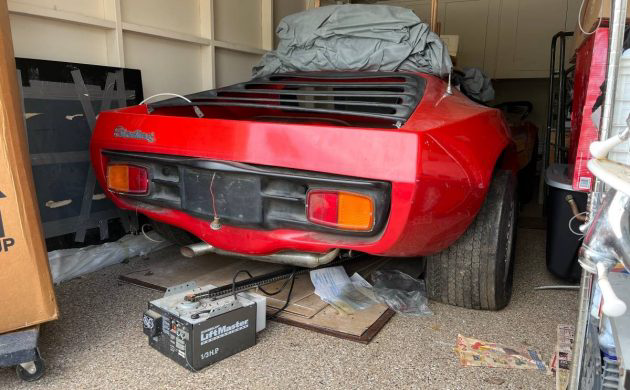
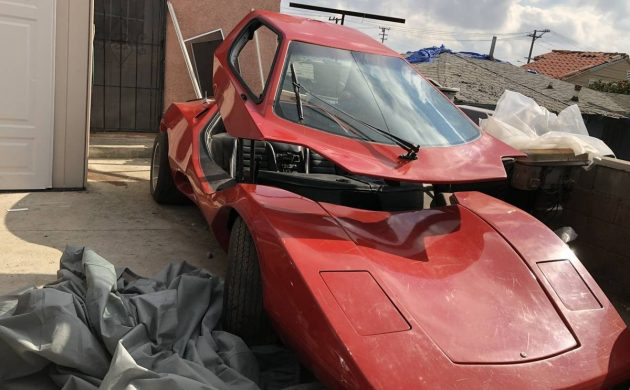
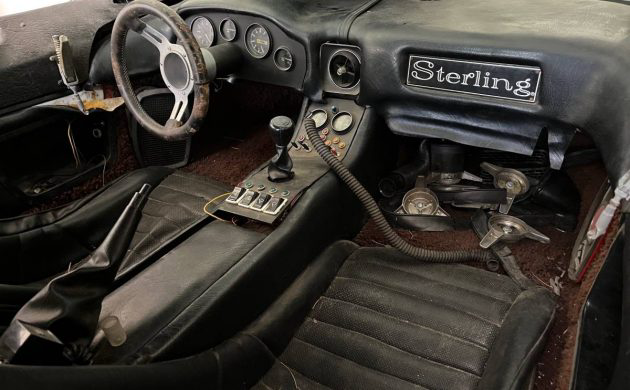
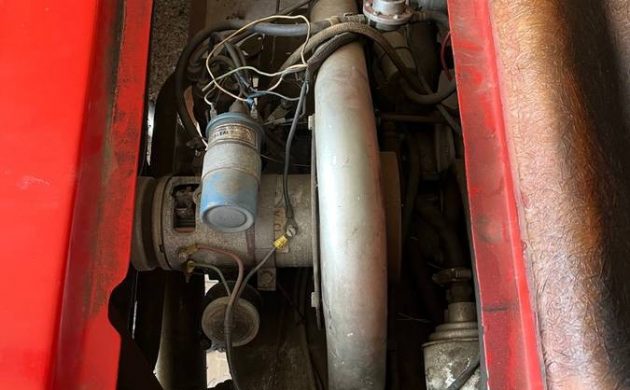
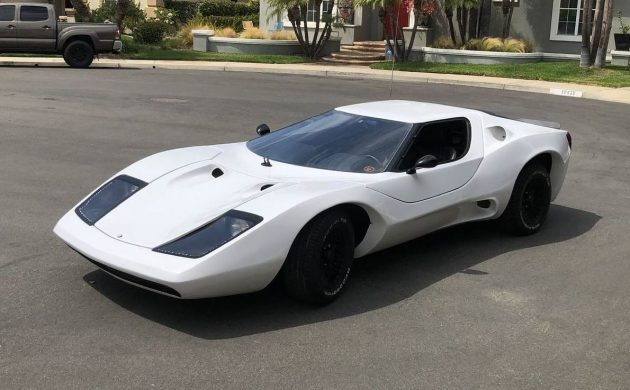
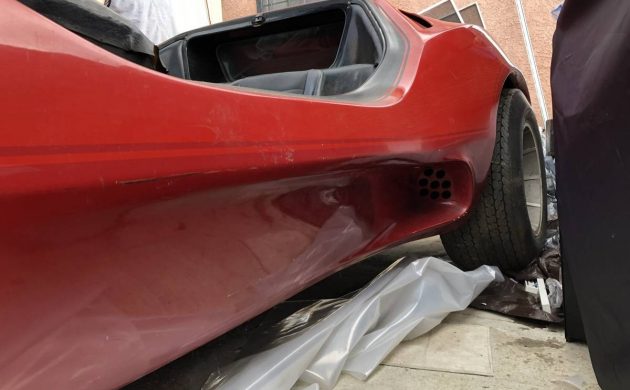


A model t caliber suspension
A tractor caliber transmission
A dinosaur like fuel delivery
A flintstone braking system
A spaghetti based electrical system
Wow
All of this joy
Makes a K car look like a sports car
I guess i am not a buyer …
Nice write-up Adam. Most people disrespect the kit industry from years past because they don’t understand it. As Claudio demonstrated.. that’s what VWs always were, and with minor modifications can be very fun vehicles despite the pedestrian fittings. With the Sterling at 1/4 of the weight of the donor Bug, and a far lower CoG, it’s more fun yet. I’m partial though – I’ve had 4 of these and one still in the garage. They aren’t for everyone, but those that “get it” can be guaranteed to have the only one at Cars and Coffee – and garner more attention than the local Ferrari owner. That said, I’m familiar with the owner of these cars. He’s a long time enthusiast. The white car has mods that won’t appeal to everyone but the red car is a good starting point for a fresh build. And yes, basic fiberglass and window glass is still available.
But…….can u drive one without worrying if you’ll make it home without a tow truck?
Volkswagen bodies are primarily attached with 4 × 13mm bolts to the four corners of the PAN.
There is no “Frame” involved. Strength by Transmission Tunnel
A perfect example of all sizzle, no steak.
Owner of a CMC 356 Wide Body with a blue printed 2275 hooked to a beefed up Super tranny & full track suspension I have alot of fun on track days with my People’s Wagon. Designed by Herr Porsche in 1937 ?
Total $ maybe 11,000.
Easy to put” steak” in any VW special. Even an upgrade to 1776 and twin carbs will give you some nice oomph..I’ve always liked these as these are not a replicar but a fresh ,unique,design..
I see the white one with no info. is also for sale. Newport Beach CA.
Your passenger will never ask what brand of car they’re in.
Pretty car, kind of neat too, but who is limber enough to get in and out of it? Certainly not I said the crippled up old man.
Good question, Rigor Mortis. how difficult is the top? Is it problematic like the Bricklin´s gull wing doors, or is it easy to open and when closed, how water proof is it? I´ve always loved the Sterling, but getting in and out of it seems to present some problems for older guys.
as a young man I was often pie eyed by all the different kit cars out there, this one included…but my tastes and sensibilities improved a bit as I aged.
If my garage was finished and my Landcruiser and TT projects were done, I might take one of these and pull it off the VW pan, and build a mid engine chassis under it.
I used to lust after the MidEngineering chassis for the Kelmark too.
The only VW powered kits I would consider these days would be like Kens 356 widebody or possibly a 550 spider or “maybe” a regular dunebuggy for summer fun.
I used to lust after the Corsen 512BBI kit cars until those “sensibilities” kicked in and I realized i couldn’t stand the thought of anything but a real flat 12 in the back……
I always wanted to build a Cobra too, but those cost more than my garage is costing me, it seems as if the days of a reg guy affording even the basic kit and doing it himself are long gone
Hi I am interested in the red car how can I get a message to the owner?
When I was in my thirties, around 1982, I bought a yellow Sterling Kit that had never been assembled. I had seen the upper part on blocks around the back of a franchised transmission repair shop in Huntsville, Al. There wasn’t a for-sale sign, but I asked the owner anyway, if he would sell it. I caught him on a bad day for him, but good for me. He said that he bought the Sterling, to build for his girlfriend, but decided to give her a yellow Triump TR7 instead. He said that his job was working on cars, but his hobby wasn’t going to be working on cars too. I have him $1500 USD and took the car home. I bought an old, but running 1962 Baja Bug for the flooring pan chassis & drivetrain. My brother had owned a Super Beetle in the 1970s, I soon learned the differences in two cars, besides 8 or 9 years. When I grew tired of the anemic 1200cc engine, I bought & installed a “Big Bore Engine Kit”. It was a very easy engine upgrade. No machining was required to increase the displacement for the size kit I purchased. I just swapped old cylinders and pistons for new ones. I grew tired of old worn out Camaros and Mustangs still leaving me in their dust. My next move was buying an engine adapter kit to install a Mazda 12A rotary engine that I bought from a local auto recycler. I got a 125hp Nitrous Oxide Injection plate system just in case the Naturally Aspirated Mazda engine didn’t enough horsepower to put V8s in there place, from a guy owned a beautiful blue 1965 Pontiac GTO, that he said that he wasn’t going to install the Nitrous Oxide on his newly restored engine.
I never finished that engine swap experiment because I found jobs that kept me out of town for the next 7 or 8 yrs. During that time, I helped design cargo door modifications on Boeing & Bae aircraft, engine & cockpit installations for Piper Aircraft (Lycomins are similar to the VW air-cooled engines), completed missile systems updates for McDonnell Douglas, did detail designs for corporate business jet completions and watched NASA launch Space Shuttles.
The most fun I had with my Sterling was the excitement it caused on a local college campus. I felt like a celeb cxc when I walked back to the car, used my key to unlock the tee-handle and pulled that top up to get in. Another time, a guy in my hometown almost fell as he walked down his steps as I drove by in my Sterling. His mouth was wide open! I kind of even had one-ups on my friends who drove Corvette sports cars. They never built a sports car, but I did. I’m in my sixties now and look back at those times I had with that car as good times. I even went to the 1987 Kit Car Nationals in Columbus, Ohio. I drove my van. I saw an amazing variety of kit cars and some that were one of a kind home or shop built vehicles.